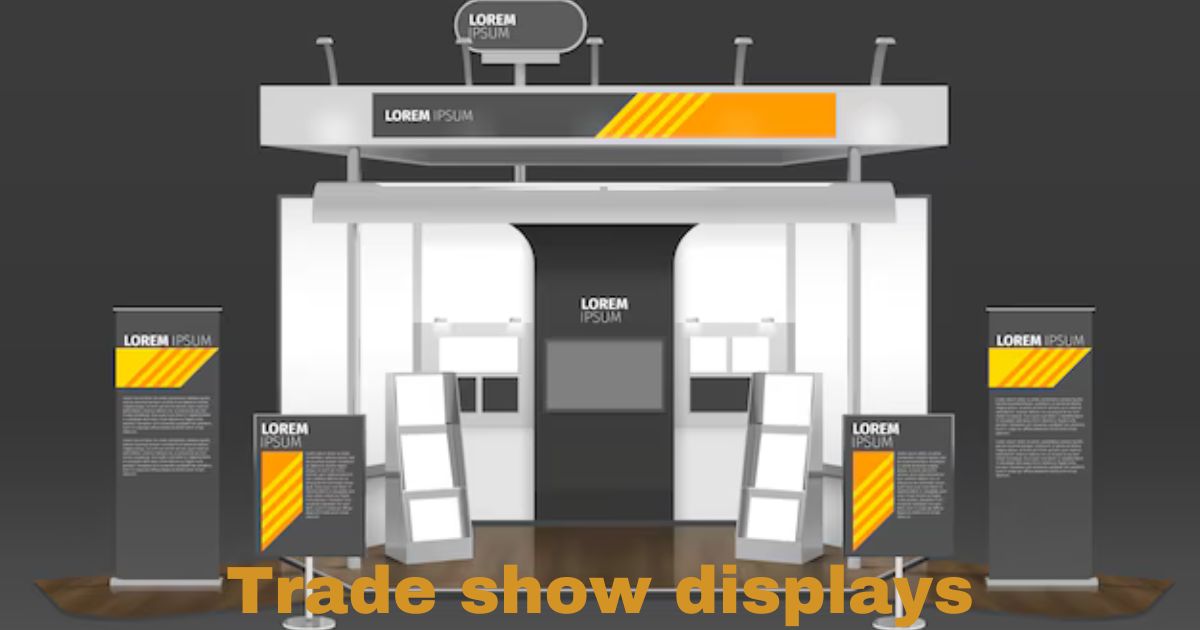Trade shows are an essential platform for businesses to showcase their products, build brand awareness, and engage with potential clients. However, a successful trade show presence hinges largely on one crucial element – the trade show display. The effectiveness of your trade show display can significantly impact your booth’s foot traffic, lead generation, and the overall impression you leave on attendees. In this article, we will explore what trade show displays are, different types available, key considerations when designing them, and answer some frequently asked questions (FAQ) about trade show displays.
What are Trade Show Displays?
A trade show display is essentially the visual setup or booth that businesses use to present their products and services during trade shows, conventions, or exhibitions. These displays can range from simple, portable setups to large, elaborate booths with advanced lighting, graphics, and interactive elements. The goal of a trade show display is to attract attention, provide a clear and concise message about your business, and facilitate engagement with attendees.
The design and structure of a trade show display are integral in representing the company’s brand identity and values. They must be visually appealing while also providing essential information that can be easily digested by visitors in a short period.
Types of Trade Show Displays
When planning a trade show booth, there are numerous types of trade show displays to choose from, each offering unique advantages depending on the company’s needs, goals, and budget.
Pop-Up Displays
Pop-up displays are one of the most common types used in trade shows due to their portability and ease of assembly. They typically consist of a lightweight frame that “pops up” into shape and can be covered with fabric or graphic panels. Pop-up displays are ideal for businesses looking for a quick, affordable, and attractive display solution.
Modular Displays
Modular displays are highly customizable systems that allow for flexibility in terms of size and configuration. They are designed using interchangeable parts and can be expanded or reconfigured based on the needs of the trade show space. Modular displays are particularly suitable for businesses that attend multiple trade shows with varying booth sizes.
Banner Stands
Banner stands are versatile and cost-effective options, often used as supplemental displays or for smaller booths. They feature retractable banners that are easy to transport and set up, with eye-catching graphics and messages. Banner stands are ideal for businesses looking for a lightweight solution that still offers significant branding opportunities.
Tabletop Displays
As the name suggests, tabletop displays are compact and designed to sit on top of a table. These are often used in smaller trade show setups or conferences where booth space is limited. Despite their size, they can be highly effective when designed with the right graphics and messaging.
Truss Displays
Truss displays are heavy-duty display systems made from aluminum or steel, giving them an industrial, modern look. They are highly customizable, often used in large booth spaces that require a grand or intricate setup. Truss displays offer a strong visual presence and can accommodate lighting, shelves, and other elements to enhance the trade show experience.
Digital Displays
Incorporating technology into your trade show booth is a growing trend. Digital displays include video walls, touchscreens, and interactive kiosks, providing dynamic content and engagement opportunities. These displays can present product demos, company information, or even virtual tours, making them particularly appealing to tech-savvy audiences.
Custom Displays
For companies looking to make a unique statement, custom trade show displays are an excellent option. These are tailor-made to suit the brand’s identity and specific trade show goals. Custom displays allow for full creative freedom in terms of size, materials, and design, making them stand out from more generic setups.
Objective and Target Audience
Before designing your display, clarify the objectives of participating in the trade show. Are you there to generate leads, build brand awareness, or launch a new product? Understanding the goals will guide your display’s content and messaging. Additionally, keep your target audience in mind – the design should appeal to their preferences and interests.
Branding Consistency
Your trade show display should align with your overall brand identity. Use consistent colors, logos, and fonts that match your website, brochures, and other marketing materials. This cohesion helps attendees recognize your brand quickly and strengthens brand recall after the event.
Graphics and Messaging
Effective trade show displays feature clear, bold graphics that convey key messages within seconds. Attendees will only spend a short time at each booth, so ensure your display delivers concise, impactful information. Use high-quality images, minimal text, and large fonts to grab attention from a distance.
Booth Layout
The layout of your booth plays a crucial role in how visitors interact with your display. Ensure that your booth is inviting, with easy access points and a natural flow of movement. Avoid overcrowding your space with furniture or promotional materials, as this can deter attendees from engaging with your booth.
Lighting and Visual Appeal
Lighting can enhance the overall appeal of your trade show display by highlighting important areas, creating ambiance, and drawing attention to specific products or services. Consider using spotlights, LED backlights, or illuminated signage to make your booth more visually striking.
Interactive Elements
Adding interactive elements such as touchscreens, product demonstrations, or virtual reality experiences can increase engagement and leave a lasting impression on attendees. Interactivity encourages visitors to spend more time at your booth, allowing you to communicate your message more effectively.
Portability and Durability
If you plan to attend multiple trade shows, choose a display that is portable and durable. Pop-up displays, modular systems, and banner stands are excellent options for businesses that need a solution that can be easily transported and reused. Ensure that the materials used are of high quality to withstand wear and tear from frequent use.
Conclusion
Trade show displays are an essential tool for businesses looking to make a mark at industry events. Whether opting for a simple banner stand or an elaborate custom display, the key to success lies in thoughtful design, clear messaging, and effective branding. By selecting the right type of display and incorporating engaging elements, you can create a lasting impression and maximize your return on investment at trade shows.
FAQs
How much does a trade show display cost?
The cost of a trade show display varies widely depending on the type, size, and customization. A basic pop-up display can cost between $500 and $1,500, while a more elaborate custom display can range from $5,000 to $50,000 or more. Modular displays fall somewhere in between, usually costing between $2,000 and $10,000.
How do I choose the right type of trade show display?
To choose the right display, consider your budget, booth size, trade show goals, and target audience. If you’re attending a large event and want to make a significant impact, a custom or modular display may be ideal. For smaller shows, a pop-up or tabletop display might suffice.
How far in advance should I plan my trade show display?
It’s recommended to start planning your trade show display at least 3 to 6 months before the event. This timeline allows for design, revisions, production, and any shipping or assembly needs. If you’re opting for a custom display, allow additional time for more complex elements.
Can I reuse my trade show display?
Yes, many trade show displays are designed for multiple uses. Modular displays, pop-up systems, and banner stands are particularly easy to transport and reassemble for future events. Custom displays can also be reused, although they may require slight modifications depending on booth sizes and layouts at different events.
What are some ways to make my trade show display stand out?
To make your display stand out, focus on eye-catching graphics, dynamic lighting, and interactive elements. Consider adding technology such as touchscreens or virtual reality to create a memorable experience. Offering giveaways or product demonstrations can also draw in more visitors.











